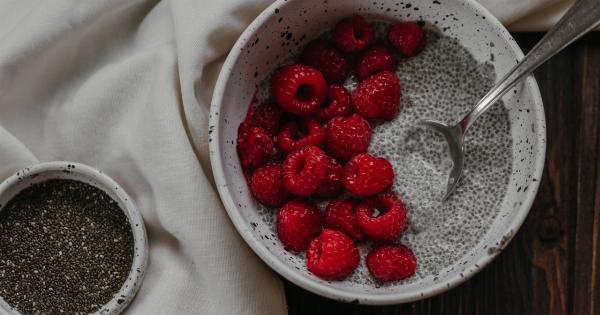Creating a kitchen that promotes healthy eating is not just about having a well-stocked pantry and fresh produce. It’s also about the environment and organization of your kitchen.
A cluttered and disorganized space can hinder your ability to make nutritious meals and enjoy the cooking process. In this article, we will explore various tips and strategies to simplify your kitchen and enhance your healthy eating habits.
1. Declutter Your Kitchen
The first step in simplifying your kitchen is to declutter. Start by going through your cabinets, pantry, and refrigerator and getting rid of anything that is expired, unhealthy, or no longer needed.
This will free up valuable space and make it easier to find and access the ingredients you need for healthy meals.
Consider donating or throwing away duplicate or rarely used items. Keep only the essentials and items that align with your healthy eating goals.
Decluttering will not only make your kitchen look cleaner and more organized but will also help you stay focused on your health journey.
2. Organize Your Pantry
An organized pantry is key to maintaining a healthy and stress-free kitchen. Start by categorizing your pantry items into groups such as grains, legumes, nuts, spices, etc.
Invest in clear containers or mason jars to store ingredients like rice, pasta, and other dry goods. This will make it easier to see what you have and prevent food from going to waste.
Label your containers to avoid confusion and ensure everything has its designated place. Arrange items based on frequency of use, placing the most frequently used items at eye level or within easy reach.
This way, you’ll spend less time searching for ingredients and more time enjoying the cooking process.
3. Optimize Your Kitchen Layout
A well-organized and optimized kitchen layout can make a significant difference in your cooking experience. Evaluate the current layout of your kitchen and identify any areas that could be improved.
Ensure that your most frequently used cookware, utensils, and appliances are easily accessible. Consider installing hooks or racks to hang pots and pans, freeing up cabinet space for other items.
Make use of vertical space by installing shelves or utilizing wall-mounted storage solutions.
Create designated zones in your kitchen for different functions, such as a prep area, cooking area, and clean-up area. This will streamline your workflow and reduce the time and effort required to prepare healthy meals.
4. Invest in Proper Storage Solutions
Investing in the right storage solutions can transform your kitchen and help you maintain a clutter-free environment. Consider using stackable containers, drawer dividers, and shelf organizers to maximize your storage space.
Use clear or labeled containers for storing leftovers and pre-prepared meals. This will make it easier to identify and utilize them later, reducing waste and saving time during busy weekdays.
5. Create a Meal Planning Station
Meal planning is an essential aspect of healthy eating. By creating a dedicated meal planning station, you can simplify the process and stay on track with your nutrition goals.
Designate an area in your kitchen to store cookbooks, recipe cards, and meal planning tools such as a whiteboard or a bulletin board. Use this space to plan your meals for the week, create shopping lists, and track your progress.
6. Keep Healthy Snacks Visible
When it comes to healthy eating, visibility plays a crucial role. To encourage healthier snacking habits, keep a bowl of fresh fruits or a tray of cut vegetables on the countertop.
This way, whenever you feel hungry or the urge to snack, nutritious options will be readily available.
Additionally, store unhealthy snacks in opaque containers or higher shelves to make them less visible and easily accessible. Out of sight, out of mind!.
7. Minimize Kitchen Gadgets
While kitchen gadgets can be fun and convenient, they can also contribute to clutter and take up valuable counter and storage space. Assess which gadgets you genuinely use on a regular basis and consider donating or selling the rest.
Opt for versatile kitchen tools that serve multiple purposes. For example, a high-quality chef’s knife can perform various cutting tasks, eliminating the need for multiple specialized knives.
Simplifying your arsenal of kitchen gadgets will help keep your workspace clean and organized.
8. Maintain a Clean and Fresh Kitchen
A clean kitchen not only enhances your cooking experience but also promotes healthy eating. Develop a habit of cleaning as you go, making sure to wipe down surfaces, wash dishes, and put away ingredients as you finish using them.
Avoid leaving dirty dishes in the sink overnight, as this can attract pests and create an unappealing environment. Regularly deep clean your kitchen appliances to maintain their efficiency and longevity.
9. Use Color Psychology
Believe it or not, the colors in your kitchen can influence your eating habits. Incorporate colors like green, blue, and gray into your kitchen design to promote a sense of calm and reduce the temptation for unhealthy foods.
Opt for vibrant-colored bowls or plates for serving salads or other nutritious meals. Conversely, use smaller plates and try to avoid brightly colored packaging for unhealthy snacks, as these can stimulate appetite and lead to mindless overeating.
10. Embrace Minimalism
Lastly, embrace minimalism in your kitchen design and approach to cooking. Keep your countertops clear of unnecessary appliances and clutter. Opt for simple and functional utensils and cookware.
Focus on high-quality ingredients and let their natural flavors shine, rather than relying on excessive seasoning or complicated recipes.
Adopting a minimalist mindset will not only simplify your kitchen but also encourage a more mindful and enjoyable cooking experience.
In conclusion, transforming your kitchen into a simplified and organized space can significantly impact your healthy eating habits.
By decluttering, organizing, and optimizing your kitchen, you can create an environment that promotes nutritious meals and an enjoyable cooking experience. Implement these tips and strategies and watch as your kitchen makeover leads to healthier choices and a happier you.





























